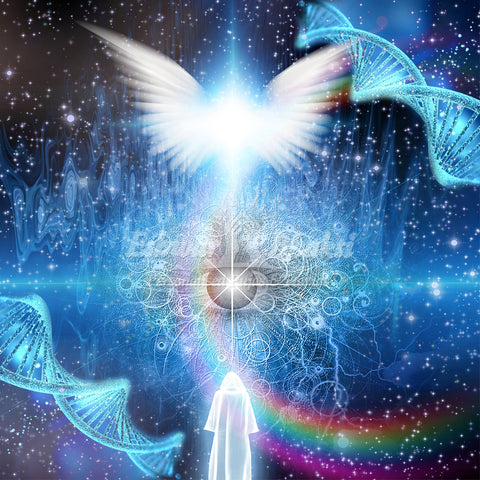Lord Agni
 Lord Agni is one of the most important Hindu deities. He is a guardian figure in the southeast direction. In a temple, we find Lord Agni placed in the southeast corner. Here, in this article, we will focus on the origin, weapons, and significance of Lord Agni in Hinduism. We will also highlight his depiction in different ancient textbooks and scriptures.
Lord Agni is one of the most important Hindu deities. He is a guardian figure in the southeast direction. In a temple, we find Lord Agni placed in the southeast corner. Here, in this article, we will focus on the origin, weapons, and significance of Lord Agni in Hinduism. We will also highlight his depiction in different ancient textbooks and scriptures.
Lord Agni resides in Agneya. He exists on three different levels. On Earth, he is present as fire, in the atmosphere, he is in the form of lightning, and in the sky, he prevails as the Sun. Lord Agni is an immortal and presides as a guest in every house. He acts as a mediator between human beings and God.
Agni or fire is also one of five Pachabhutas. The other Panchabhutas include space (Akasha), water (Ap), air (Vayu), and Earth (Prithvi). Agni is the creator, maintainer, and destroyer. He is the ruler of the Earth as well. Along with Agni, Indra and Surya are the two other significant deities associated with Agni. Agni is a prominent figure after Indra in Hinduism. Indra rules over the atmosphere and has the power to control rain, storms, and war. Surya is the deity who rules over the sky and heaven.
Origin of Agni Deva: There are different stories associated with his origin. Some texts state that he is the son of Dyaus and Prithvi. Other legends describe him as the son of Brahma. As per Maitrayani Samhita and Kathaka Samhita, Agni originated from Brahamann's forehead. Before Agni existed in the universe, there was no day and night.
The world came into being from Brahman, and it was from him that Agni came into existence. Agni gave light and evaded darkness. He created day and night. There are other references where Agni is the son of Angiras, the king of the Pitris. Some descriptions mention Agni as equal to Brahman.
Another story related to the birth of Agni is that of two fire sticks as his parents. Agni requires love and affection to sustain. Otherwise, he would find it difficult to exist. With proper care, Agni can grow stronger and would give smoke and flames. He can be even more powerful than his creator and destroy him.
When it comes to the way we refer to Agni in various contexts and texts, he has different names. Some of them are:
1. Jataveda, which means the person with knowledge of all the births
2. Vaishvaanara, which refers to someone who treats everyone equally
3. Tanunapat, which means one who is self-made
4. Narasana, which refers to one who is praised by all men
5. Tripatsya, which means one with three dwellings
Reference to Lord Agni in ancient texts: There are numerous references to Lord Agni in different ancient scriptures and texts. You can find it in Rig Veda and Upanishads. Here, we will look into the various representations and descriptions of Lord Agni in these ancient scriptures.
Rig Veda opens with an invocation of Lord Agni. You can find him as the guardian of Dharma. In Rig Veda's hymns, you can see Agni presented along with Lord Indra and Surya. In the earlier days, Lord Agni was present as a deity. However, he, later on, became represented as an internal figure. In the Upanishads, we see him portrayed as the provider of knowledge.
In Chandogya Upanishad, there is a legend of a boy named Satyakarma, who gained admission into a Vedic School. He meets with Agni and considers Agni a metaphor for knowledge and direction.
In Maitri Upanishad, some students ask their Guru about who is the best God in the world. Agni was one of the Gods on their list. The Guru ruminated over it for a while. He then replied that all of the deities are forms of Lord Brahman.
In Prashna Upanishad, there is a mention of Agni as one of the five Panchabhootas. Apart from these texts, there are other references to Agni as well.
The weapon used by Lord Agni: The weapon used by Lord Agni is Agneyastra. Agneyastra has the fire principle in it, and he used it against his enemies in different battles. Agneyastra is also used for productive purposes. Lord Agni is immortal, and he has three legs. He has seven arms and a red color. He rides a ram and wears a Brahmanical thread along with a garland.
Significance of Lord Agni: Here, we will look into the different significances of Lord Agni. Agni plays a pivotal role in many rituals. They include prayers, birthdays, marriage, death ceremonies, and other events. During a marriage, there is a ritual known as Saptapadi. Here, the bride and groom would go around Agni, where Agni acts as a witness for their vows.
Agnihotra is another ceremony where we would light a fire in our houses. We can offer milk to the fire, and when we perform Agnihotri, we can free ourselves from the negative vitalities present within us.
During religious festivals like Holi and Diwali, Agni plays a crucial role. For Diwali, the festival of lights, we light lamps or Diyas. It is a sign of evading darkness and embracing positivity. During Holi, people burn bonfires known as Holika. In some places, married women carry their children around the fire in a clockwise direction.
Agni exists in two forms. They include:
1. Jataveda: Here, Agni represents Brahman. He is a presentation of light.
2. Kravyad: Kravyad is related to cremation ceremonies. The heat helps people move forward to their next life.
Agni is also a symbol of life and purity. It also stands for dignity and pride. Lord Agni provides us with life-giving energy. He acts as a way of conveying our prayers and offerings to Gods and Goddesses during Homas. Thus, it is essential to pray to Lord Agni for removing darkness and misery from our lives.



